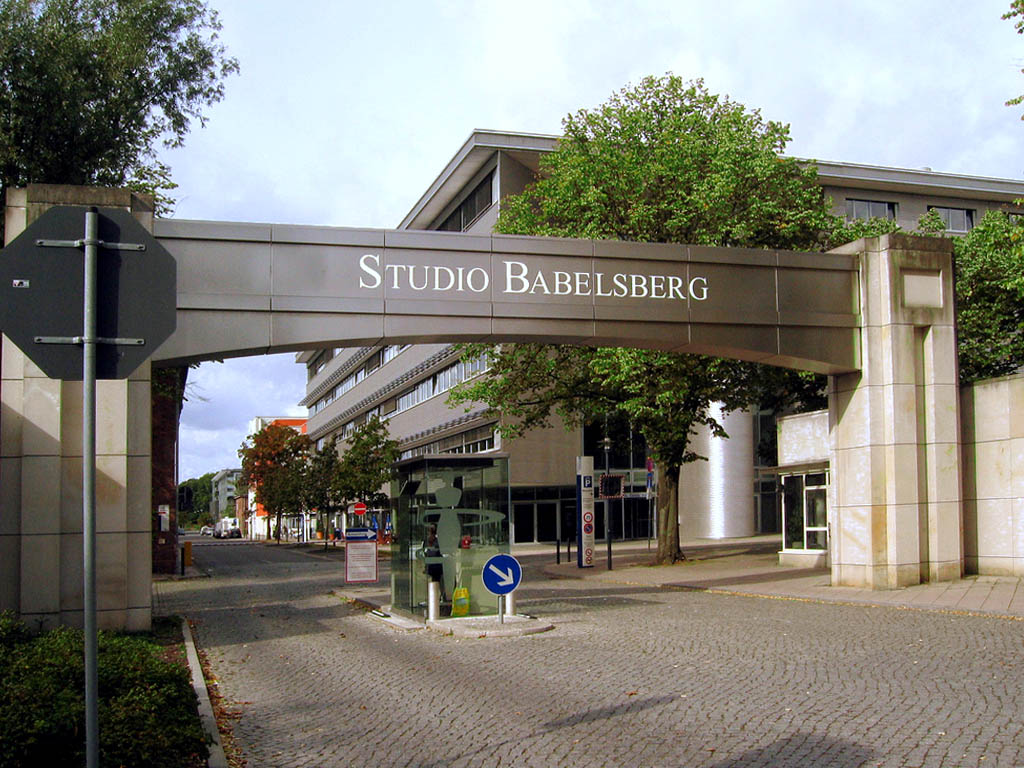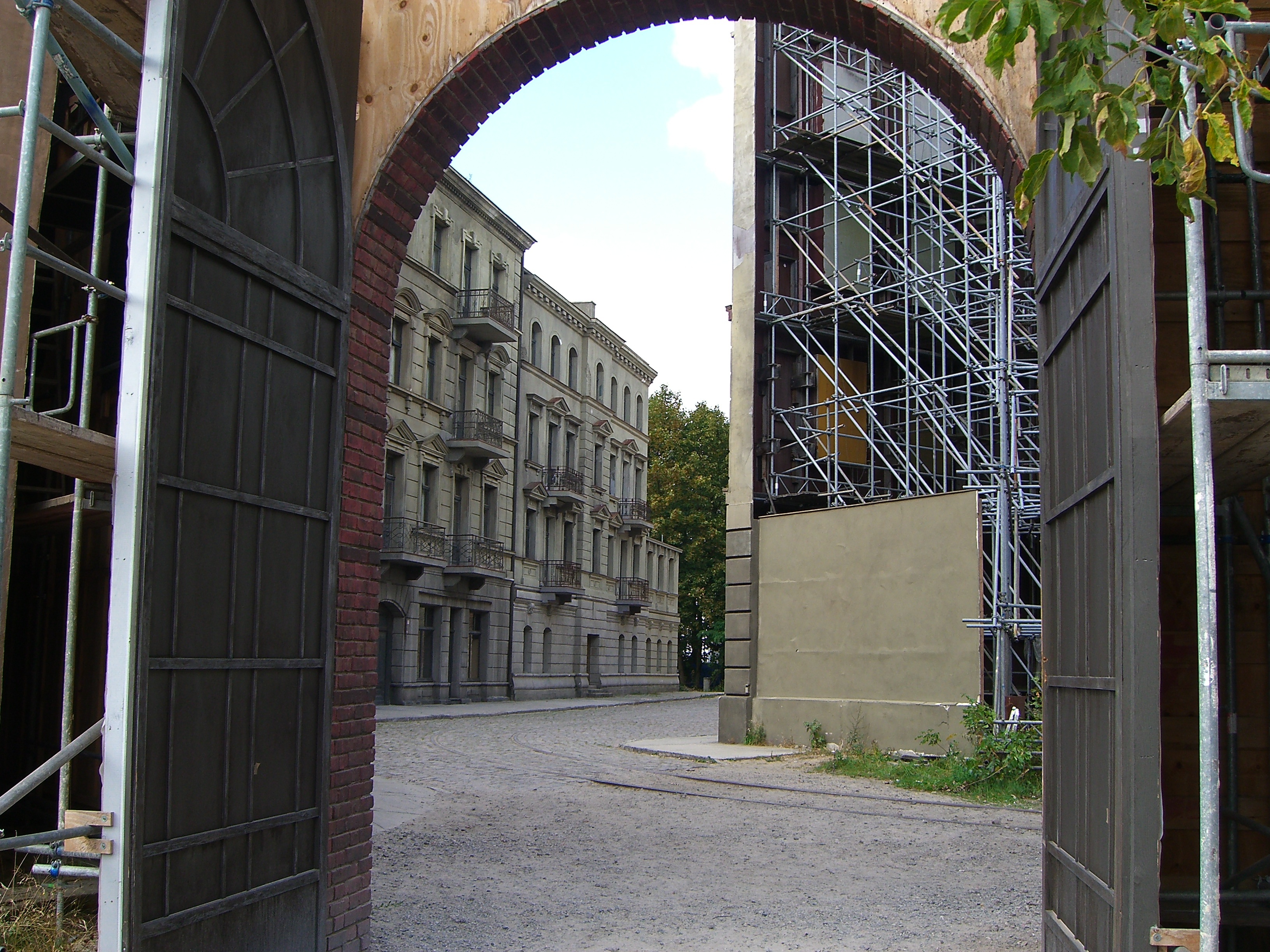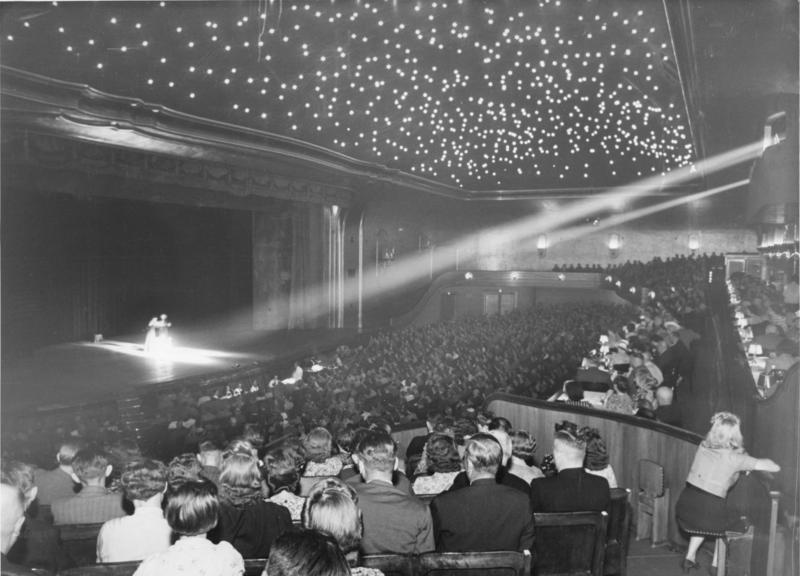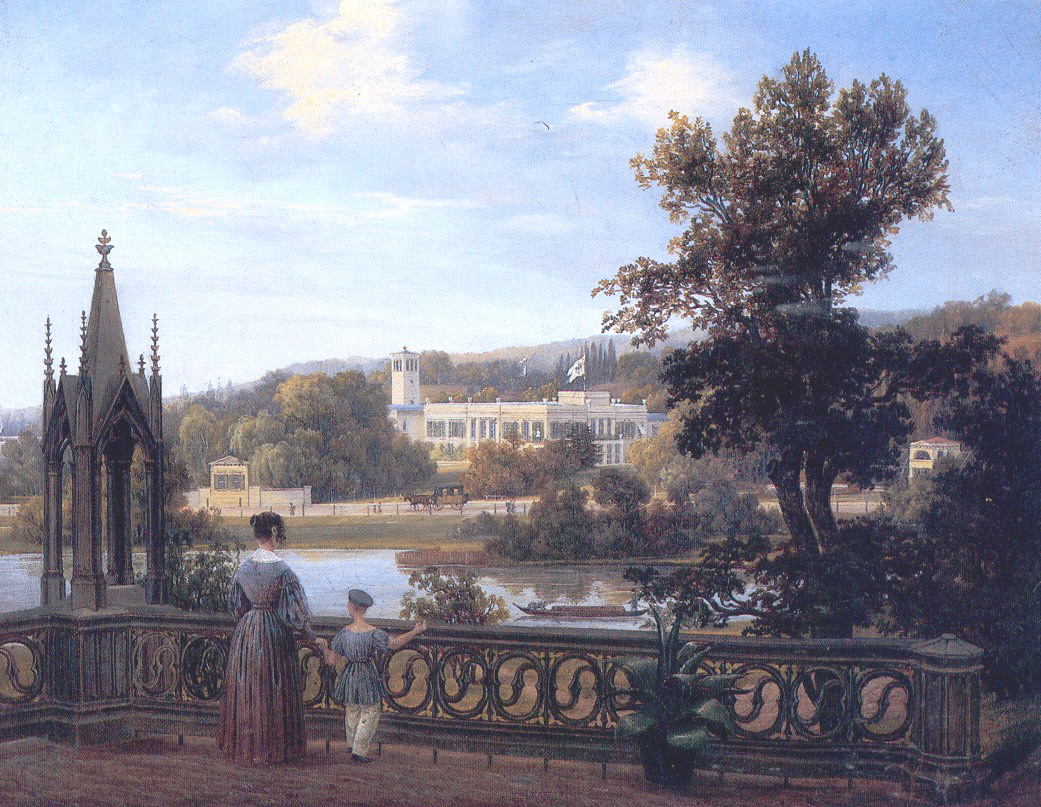|
Babelsberg
Babelsberg () is the largest quarter (''Stadtteil'') of Potsdam, the capital city of the German state of Brandenburg. The affluent neighbourhood named after a small hill on the Havel river is famous for Babelsberg Palace and Park, part of the Palaces and Parks of Potsdam and Berlin UNESCO World Heritage Site, as well as for Babelsberg Studio, a historical centre of the German film industry and the first large-scale movie studio in the world. History A settlement on the small Nuthe creek was first mentioned in the 1375 ''Landbuch'' (domesday book) by Emperor Charles IV of Luxembourg, who also ruled as Margrave of Brandenburg since 1373. Then called ''Neuendorf'' (New Village) after its former West Slavic name ''Nova Ves'', it was shelled several times and was severely damaged during the Thirty Years' War. In the mid-18th century the new village of Nowawes was founded by King Frederick II of Prussia and settled with Protestant Bohemian deportees, predominantly weavers who as de ... [...More Info...] [...Related Items...] OR: [Wikipedia] [Google] [Baidu] |
Babelsberg Studio
Babelsberg Film Studio (german: Filmstudio Babelsberg), located in Potsdam-Babelsberg outside Berlin, Germany, is the second oldest large-scale film studio in the world only preceded by the Danish Nordisk Film (est. 1906), producing films since 1912. With a total area of about and a studio area of about it is Europe's largest film studio. Hundreds of films, including Fritz Lang's ''Metropolis'' and Josef von Sternberg's ''The Blue Angel'' were filmed there. More recent productions include ''V for Vendetta'', '' Captain America: Civil War'', ''Æon Flux'', '' The Bourne Ultimatum'', ''Valkyrie'', ''Inglourious Basterds'', ''Cloud Atlas'', ''The Grand Budapest Hotel'', ''The Hunger Games'', ''Isle of Dogs'' and ''The Matrix Resurrections''. Today, Studio Babelsberg remains operational mainly for feature film productions. It also acts as producer on German productions and co-producer on international high-budget productions. Since January 2022 it has been owned by TPG Real Estate ... [...More Info...] [...Related Items...] OR: [Wikipedia] [Google] [Baidu] |
Babelsberg Park
Babelsberg Park (german: Park Babelsberg) is a 114 hectare park in the northeast of the city of Potsdam, bordering on the ''Tiefen See'' lake on the River Havel. The park was first designed by the landscape artist Peter Joseph Lenné and, after him, by Prince Hermann von Pückler-Muskau and Karl Friedrich Schinkel, by order of the then-prince William I and his wife, Augusta. Located on a hill sloping down to the lake, the park and castle are part of the Palaces and Parks of Potsdam and Berlin, which were inscribed on the UNESCO World Heritage List because of their unique architecture and testimony to the development of landscape design. Park After Glienicke Palace had been built for his brother Charles and Charlottenhof Palace for his brother Frederick William IV, Prince William also strove to have his own residence built. He received support for this idea from Lenné, who wanted to turn the area around Potsdam into an artistic synthesis and saw the opportunity of la ... [...More Info...] [...Related Items...] OR: [Wikipedia] [Google] [Baidu] |
Babelsberg Palace
Babelsberg Palace (german: Schloss Babelsberg) lies in the eponymous Babelsberg Park, park and Potsdam-Babelsberg, quarter of Potsdam, the capital of the German state of Brandenburg, near Berlin. For over 50 years it was the summer residence of Prince William, later German Emperor William I (German Empire), William I and King of Prussia and his wife, Augusta of Saxe-Weimar-Eisenach, Augusta of the House of Saxe-Weimar-Eisenach, German Empress and Queen of Prussia. Along with the surrounding park and other Palaces and Parks of Potsdam and Berlin, parks in the area, the Babelsberg Palace was inscribed on the UNESCO World Heritage list in 1990 for its architectural cohesion and its testimony to the power of the Prussian monarchy. History The building, designed in the English Gothic revival architecture, Gothic revival style, was built in two phases over the period 1833–1849. The contract to plan the palace was given to the architects Karl Friedrich Schinkel, who was in charge of the ... [...More Info...] [...Related Items...] OR: [Wikipedia] [Google] [Baidu] |
Potsdam
Potsdam () is the capital and, with around 183,000 inhabitants, largest city of the German state of Brandenburg. It is part of the Berlin/Brandenburg Metropolitan Region. Potsdam sits on the River Havel, a tributary of the Elbe, downstream of Berlin, and lies embedded in a hilly morainic landscape dotted with many lakes, around 20 of which are located within Potsdam's city limits. It lies some southwest of Berlin's city centre. The name of the city and of many of its boroughs are of Slavic origin. Potsdam was a residence of the Prussian kings and the German Kaiser until 1918. Its planning embodied ideas of the Age of Enlightenment: through a careful balance of architecture and landscape, Potsdam was intended as "a picturesque, pastoral dream" which would remind its residents of their relationship with nature and reason. The city, which is over 1000 years old, is widely known for its palaces, its lakes, and its overall historical and cultural significance. Landmarks include ... [...More Info...] [...Related Items...] OR: [Wikipedia] [Google] [Baidu] |
Universum Film AG
UFA GmbH, shortened to UFA (), is a film and television production company that unites all production activities of the media conglomerate Bertelsmann in Germany. Its name derives from Universum-Film Aktiengesellschaft (normally abbreviated as ''UFA''), a major German film company headquartered in Babelsberg, producing and distributing motion pictures from 1917 until the end of the Nazi era. The name UFA was revived by Bertelsmann for an otherwise unrelated film and television outfit, UFA GmbH. The original UFA was established as Universum-Film Aktiengesellschaft on December 18, 1917, as a direct response to foreign competition in film and propaganda. UFA was founded by a consortium headed by Emil Georg von Stauß, a former Deutsche Bank board member. In March 1927, Alfred Hugenberg, an influential German media entrepreneur and later Minister of the Economy, Agriculture and Nutrition in Hitler's cabinet, purchased UFA and transferred ownership of it to the Nazi Party in 1933. ... [...More Info...] [...Related Items...] OR: [Wikipedia] [Google] [Baidu] |
Cinema Of Germany
The film industry in Germany can be traced back to the late 19th century. German cinema made major technical and artistic contributions to early film, broadcasting and television technology. Babelsberg Studio, Babelsberg became a household synonym for the early 20th century film industry in Europe, similar to Hollywood later. Germany witnessed major changes to its identity during the 20th and 21st century. Those changes determined the periodisation of national cinema into a succession of distinct eras and movements. History 1895–1918 German Empire The history of cinema in Germany can be traced back to the years shortly after the medium's birth. On 1 November 1895, Max Skladanowsky and his brother Emil demonstrated their self-invented movie projector, film projector, the Bioscop, at the Berlin Wintergarten theatre, Wintergarten music hall in Berlin. A 15-minute series of eight short films were shown – the first screening of films to a paying audience. This performance pre ... [...More Info...] [...Related Items...] OR: [Wikipedia] [Google] [Baidu] |
Palaces And Parks Of Potsdam And Berlin
Palaces and Parks of Potsdam and Berlin (german: Schlösser und Gärten von Potsdam und Berlin) are a group of palace complexes and extended landscape gardens located in the Havelland region around Potsdam and the German capital of Berlin. The term was used upon the designation of the cultural ensemble as a World Heritage Site by UNESCO in 1990. It was recognized for the historic unity of its landscape—a unique example of landscape design against the background of monarchic ideas of the Prussian state and common efforts of emancipation. Extent Initially, the world heritage site encompassed 500 hectares, covering 150 construction projects, which spanned the years from 1730 to 1916. Until the Peaceful Revolution of 1989, these areas were separated by the Berlin Wall, running between Potsdam and West Berlin, and several historic sites were destructed by 'death strip' border fortifications. Two stages of extension to the World Heritage Site, in 1992, and 1999 led to the incorporation ... [...More Info...] [...Related Items...] OR: [Wikipedia] [Google] [Baidu] |
Orenstein & Koppel
Orenstein & Koppel (normally abbreviated to "O&K") was a major Germany, German engineering company specialising in railway vehicles, escalators, and heavy equipment. It was founded on April 1, 1876 in Berlin by Benno Orenstein and Arthur Koppel. Originally a general engineering company, O&K soon started to specialise in the manufacture of railway vehicles. The company also manufactured heavy equipment and escalators. O&K pulled out of the railway business in 1981. Its escalator-manufacturing division was spun off to the company's majority shareholder at the time, Krupp, Friedrich Krupp AG Hoesch-Krupp, in 1996, leaving the company to focus primarily on construction machines. The construction-equipment business was sold to New Holland Construction, at the time part of the Fiat Group, in 1999. Founding and railway work The Orenstein & Koppel Company was a mechanical engineering, mechanical-engineering firm that first entered the railway-construction field, building locomotives a ... [...More Info...] [...Related Items...] OR: [Wikipedia] [Google] [Baidu] |
Germany
Germany,, officially the Federal Republic of Germany, is a country in Central Europe. It is the second most populous country in Europe after Russia, and the most populous member state of the European Union. Germany is situated between the Baltic and North seas to the north, and the Alps to the south; it covers an area of , with a population of almost 84 million within its 16 constituent states. Germany borders Denmark to the north, Poland and the Czech Republic to the east, Austria and Switzerland to the south, and France, Luxembourg, Belgium, and the Netherlands to the west. The nation's capital and most populous city is Berlin and its financial centre is Frankfurt; the largest urban area is the Ruhr. Various Germanic tribes have inhabited the northern parts of modern Germany since classical antiquity. A region named Germania was documented before AD 100. In 962, the Kingdom of Germany formed the bulk of the Holy Roman Empire. During the 16th ce ... [...More Info...] [...Related Items...] OR: [Wikipedia] [Google] [Baidu] |
Griebnitzsee
Griebnitzsee (, from the Slavic ''Grib'', ''Mushroom'') is a lake at the south-western outskirts of Berlin, the capital city of Germany. At an elevation of 29.4 m, its surface area is ca. 0.592 km². The lake forms the border between the German states of Berlin and Brandenburg. It is bordered in the north by the Wannsee district of Berlin, and in the south and west by the Babelsberg district of Potsdam in Brandenburg. Overview At its eastern end, near Kohlhasenbrück in Berlin, the Griebnitzsee receives water from the Teltow Canal. One third of this water flows into the adjacent Griebnitz Canal and through a chain of lakes towards the Großer Wannsee. The remaining water flows through the Griebnitzsee to its western end, where it flows into the River Havel near Potsdam. The length of the Griebnitzsee is navigable, and forms part of the Teltow Canal route that links the River Havel with the River Spree and the Oder-Spree Canal, bypassing the reach of the River Spree through ... [...More Info...] [...Related Items...] OR: [Wikipedia] [Google] [Baidu] |
Ludwig Mies Van Der Rohe
Ludwig Mies van der Rohe ( ; ; born Maria Ludwig Michael Mies; March 27, 1886August 17, 1969) was a German-American architect. He was commonly referred to as Mies, his surname. Along with Alvar Aalto, Le Corbusier, Walter Gropius and Frank Lloyd Wright, he is regarded as one of the pioneers of modernist architecture. In the 1930s, Mies was the last director of the Bauhaus, a ground-breaking school of modernist art, design and architecture. After Nazism's rise to power, with its strong opposition to modernism (leading to the closing of the Bauhaus itself), Mies emigrated to the United States. He accepted the position to head the architecture school at what is today the Illinois Institute of Technology in Chicago. Mies sought to establish his own particular architectural style that could represent modern times just as Classical and Gothic did for their own eras. The style he created made a statement with its extreme clarity and simplicity. His mature buildings made use of modern ... [...More Info...] [...Related Items...] OR: [Wikipedia] [Google] [Baidu] |
Brandenburg
Brandenburg (; nds, Brannenborg; dsb, Bramborska ) is a states of Germany, state in the northeast of Germany bordering the states of Mecklenburg-Vorpommern, Lower Saxony, Saxony-Anhalt, and Saxony, as well as the country of Poland. With an area of 29,480 square kilometres (11,382 square miles) and a population of 2.5 million residents, it is the List of German states by area, fifth-largest German state by area and the List of German states by population, tenth-most populous. Potsdam is the state capital and largest city, and other major towns are Cottbus, Brandenburg an der Havel and Frankfurt (Oder). Brandenburg surrounds the national capital and city-state of Berlin, and together they form the Berlin/Brandenburg Metropolitan Region, the third-largest Metropolitan regions in Germany, metropolitan area in Germany with a total population of about 6.2 million. There was Fusion of Berlin and Brandenburg#1996 fusion attempt, an unsuccessful attempt to unify both states in 1996 and ... [...More Info...] [...Related Items...] OR: [Wikipedia] [Google] [Baidu] |








